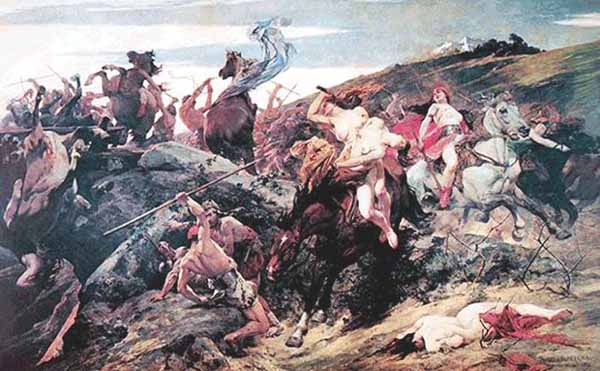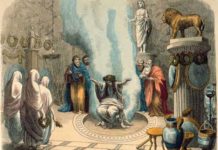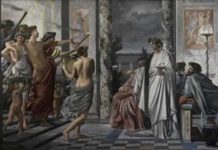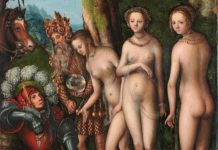The ancient weaponry and varied warrior clothing of the fierce Amazons reflect these women warriors’ diverse origins.
Central figures of Greek mythology and a very popular theme in ancient Greek art, the Amazons were the fierce women warriors that fought many battles against Greek armies and Greek heroes, such as Theseus, Achilles, Hercules and Bellerophon. The Amazons’ warrior clothing as depicted on black-figure pottery and friezes reflects the ancient Greeks’ changing perceptions regarding these women warriors’ origins.
Amazons Weapons
An all-female tribe of women warriors the Amazons were skilled horse riders and are often seen on horseback during battles. At first they are depicted using the common weapons of the hoplite, or ancient Greek soldier: sword, spear and a round shield. Later from the 6thC BC onwards, non-Greek weapons are introduced to the Amazons arsenal to make their foreignness apparent. It is the time when the myth places the Amazons’ place of origin in Asia. The weapons include:
- Bow and arrow: one of the typical Amazon weapons. It has been pointed out (Blok) that in the language of the weapons code, the bow denotes a mode of fighting that is beneath a Greek. Thus, the distinction between “Greeks” and “barbarians” was made. The bow and arrow associates Amazons with the Greek goddess, Artemis.
- Battle axe: not a typical Greek weapon, this axe originates from Scythia (today Crimea) and is also called sagaris.
- Shield: the round shield of the hoplite is replaced by the pelta, a small shield of an elliptic form, or crescent shaped.
Ancient Dress of the Amazons
From being depicted as Greek hoplites the Amazons were increasingly shown from the 6thC BC onwards dressed in non-Greek warrior clothing. The Amazons’ ancient dress develops as follows:
- Hoplite armour: This warrior clothing consists of a helmet, round shield, sword and spear, sometimes greaves, or shin guards, and a breastplate. In black-figure pottery Amazons are distinguished from Greek hoplites by the whiteness of their skin.
- Long dress, or ancient Greek chiton
- Short tunic fastened with girdle; a usual attire of Penthisilea, queen of the Amazons. In ancient Greek reliefs that depict Amazon battles, the Greeks are distinguished from Amazons by their chiton and breastplate. The short tunic has often patterned sleeves (Scythian dress).
- Long trousers and a jacket, often fastened with girdle. This ancient dress was typically “barbarian”. It was worn with a cap (see below in head gear). It was introduced around 515-600 BC, arguably by Euprhonios.
- Animal skins: A feature of the Amazons’ non-Greek origin is the animal skins they are wearing, especially leopard and lion skins. This costume gave the Amazons an unusual, exotic look.
- Head gear: The helmet, part of the early Amazons warrior clothing, is later replaced by fur caps, or helmets with bull’s ears and a bull’s tail. The long trousers and jacket costume is usually worn with a tall pointed cap which is sometimes called a Phrygian cap. In some cases the cap has hanging side-pieces.
The Amazons warrior clothing often combined many features, for example the Phrygian cap is sometimes found without the long-trousers-and-jacket costume. The long trousers costume worn with the Phrygian cap is sometimes called “oriental costume”.
Amazons and Amazon battles (Amazonomachy) are depicted on the west-side metopes of the Athens Parthenon (Acropolis Museum); in Stoa Poikile (Painted Porch) of the Athens Agora; on friezes of the Mausoleum of Halikarnassos (British Museum), in a marble sarcophagus panel (Vatican) and on Attic pottery.
Amazons in Myth and Reality
The question “who were the Amazons” has intrigued researchers for generations. Noble comments that in the case of the Amazons there is “a fundamental tension between myth, ethnography and barbarian realities” which was never really resolved: “The Amazon myth provided a narrative matrix to accommodate fighting barbarian women, and influenced perceptions of powerful women even when they were not called Amazons.”








